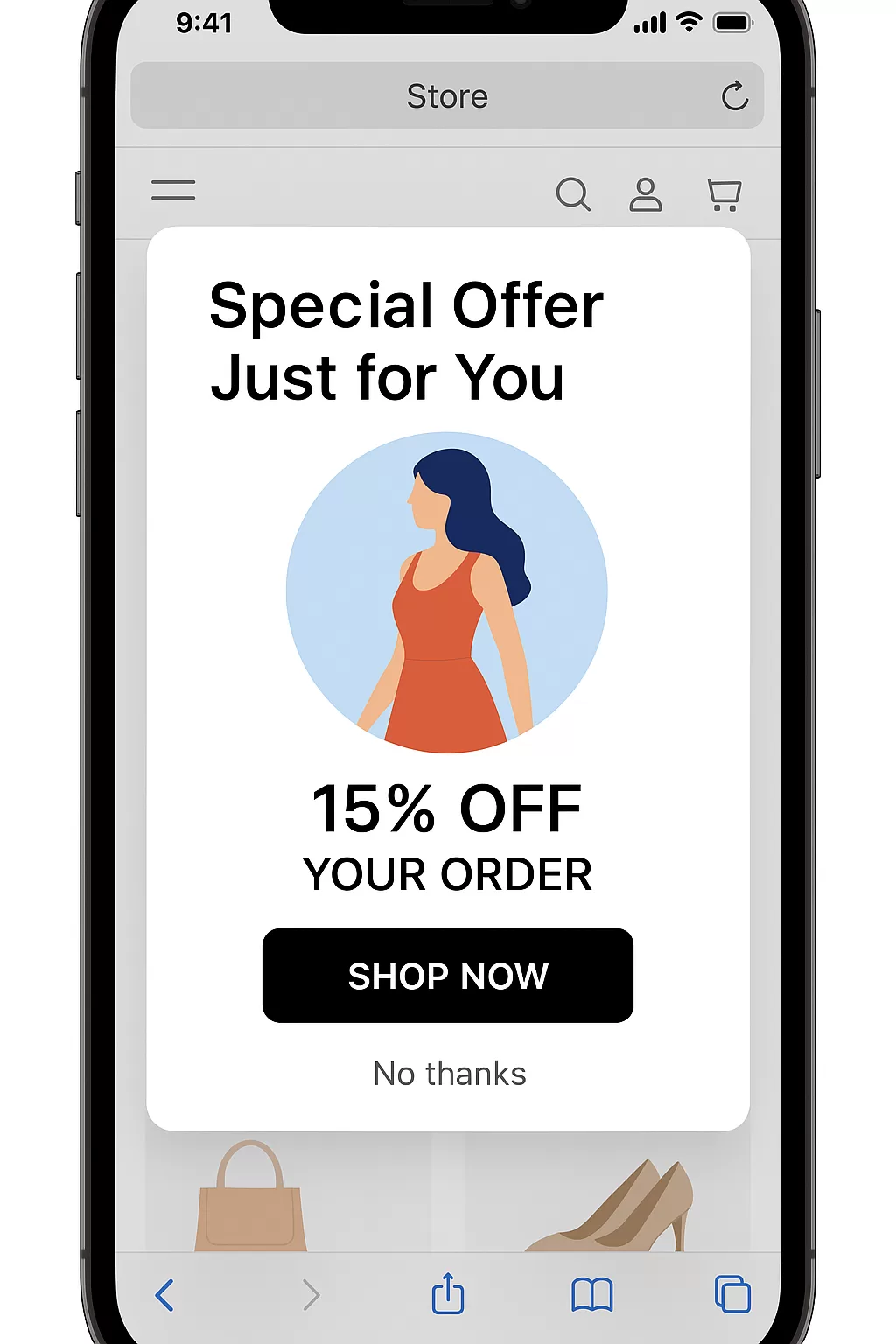Table of Contents
However, recent advances in Machine Learning (ML) now allow brands to go beyond guesswork and use data to use Purchase Intent due to consumer actions, personalise the customer journey, and increase conversion rates due to purchase intent — all while building trust through transparency and explainability.
This article summarises a data-driven simulation that shows how fashion businesses can use ML to anticipate online buying behaviour — even when only a few visits convert into sales.
Key Challenges in ecommerce
Most buyers online:
- Browse multiple items before deciding
- Often see items in different ecommerce locations like promotions, article categories, recommended …
- Are highly influenced by images, social proof, and urgency
- Often abandon their cart without explanation
Traditional analytics (such as averages or segment-based campaigns) no longer capture this complexity. Instead, predictive algorithms are now essential to understanding and acting on these patterns in real-time.
What We Did to Simulate
We created a dataset with 10,000 online visits to a fashion e-store. Each visit included:
- Session time and number of products viewed
- Most visited category and other data (e.g. Dresses, Shoes, Sizes, Color, Collection using dataLayer)
- Device used and location
- Interaction with promotions
- Whether the user added items to the cart
Only 1.48% of these visits resulted in a purchase — reflecting average conversion rates in fashion ecommerce.
We then trained an XGBoost Machine Learning model to predict the likelihood of purchase based on user behaviour.
Key Findings: What Matters Most
The model identified the top 15 drivers of purchase intent. Here’s what mattered the most:
| Top Predictive Factors | Insight for Marketers |
|---|---|
| 🛒 Added to cart | Strong signal of intent. Trigger a timely follow-up. |
| 💬 Interacted with promo | Discounts work — but only if shown to the right users. |
| ⏱️ Session time | Longer time spent = more interest. Consider exit-intent actions. |
| 📱 Mobile usage | Device affects behaviour. Optimise mobile experience. |
| 📍 Location | Tailor campaigns by region or city. |
What Makes It Actionable: Explainability
Machine Learning is often seen as a “black box”. However, we used Explainable AI (XAI) techniques (like feature importance graphs) to make each prediction understandable.
This means marketing teams don’t just get scores — they get reasons. For example:
“User X has a 74% probability to buy because she added a dress to her cart, interacted with a promo, and spent 12 minutes browsing.”
This cultivates a strong sense of trust and empowers non-technical teams to take bold, effective action.
What Marketing Leaders Can and Should Do Now
- Elevate your personalization strategy by delivering the perfect message or offer at precisely the right moment, harnessing the power of predictive models for unparalleled impact.
- Focus on Critical Factors: Relentlessly prioritize session duration, cart activities, and mobile behaviour to drive highly impactful strategic campaigns.
- Establish Trust with Clear Models: Equip your marketing teams with the essential resources they need to confidently interpret and utilize insights, regardless of their data science expertise.
We Can Conclude
- Machine learning doesn’t replace marketing; it enhances it. By predicting user behavior and understanding motivations, fashion brands can create journeys that feel intuitive, timely, and relevant.
- For Marketing Directors and Business Leaders, this means better ROI, lower acquisition costs, and stronger long-term loyalty.
- We understand that your marketing stack needs to provide you with essential functionalities to support your goals.
Let’s turn data into decisions — over coffee. Book a conversation with us today





